Every time I walk along Fleet Street I find something to write about.
This week I decided to take another look at the courts and alleys starting with the curiously named Poppin’s Court (a good name for the restaurant). The wallsign gives tourists a visual clue as to what’s on offer, yummy!) ..
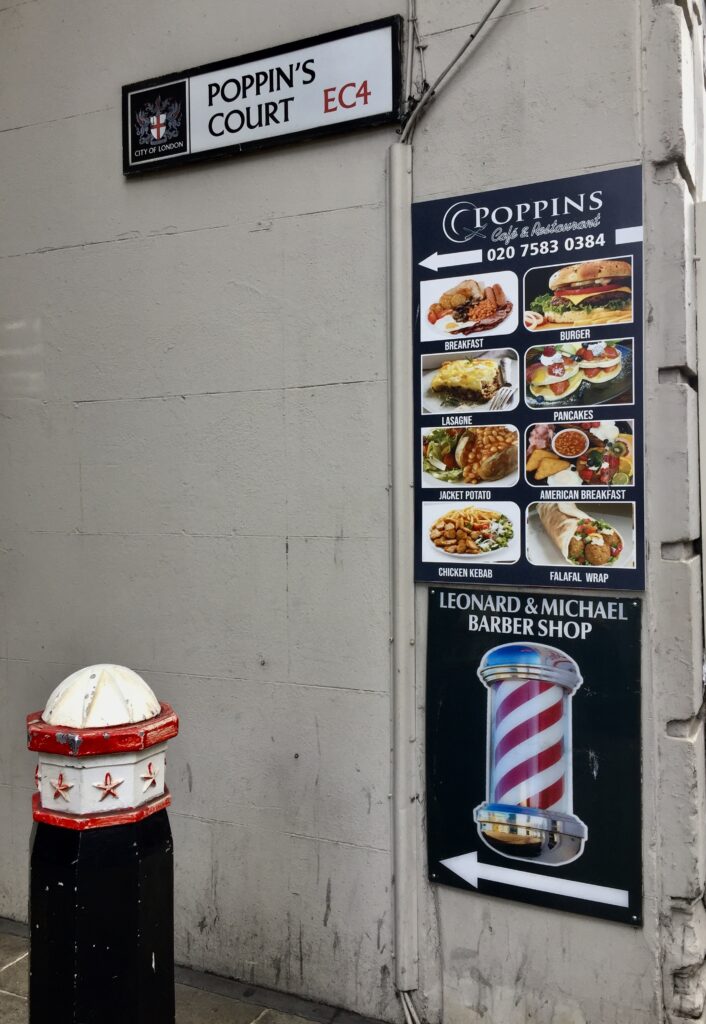
According to The London Encyclopaedia, the abbots of Cirencester, whose crest included a popinjay or parrot, had a town house here in the early 14th century called Le Popyngaye and the name stuck. If this is correct, the apostrophe in the current name is not really appropriate, giving the impression that someone called Poppin used to live there. Or possibly that the court is named after the restaurant. There used to be a stone relief of a parrot over the court’s entrance but this has disappeared.
I was curious to know what a coat of arms with a parrot on it looked like and I found one, on the crest of Sutton United Football Club of all places …
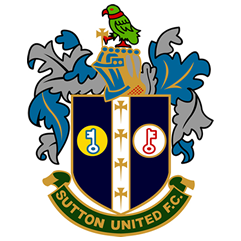
Further west is Peterborough Court, with its ‘IN’ entrance …
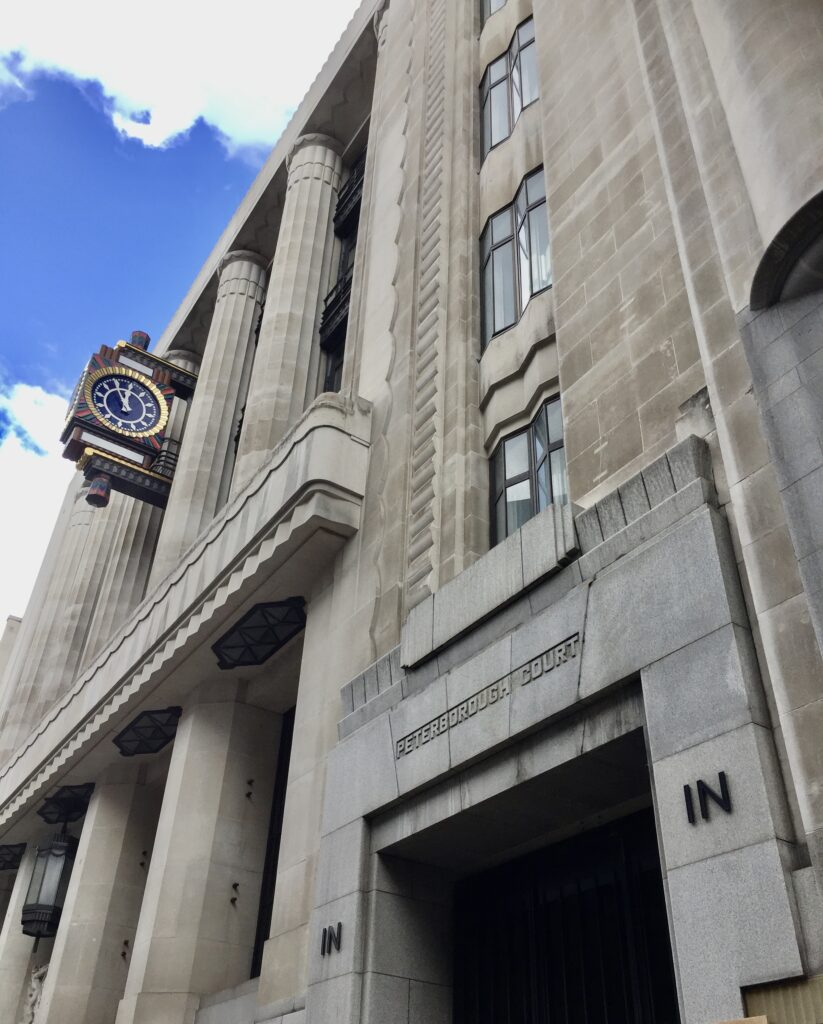
… and ‘OUT’ exit …
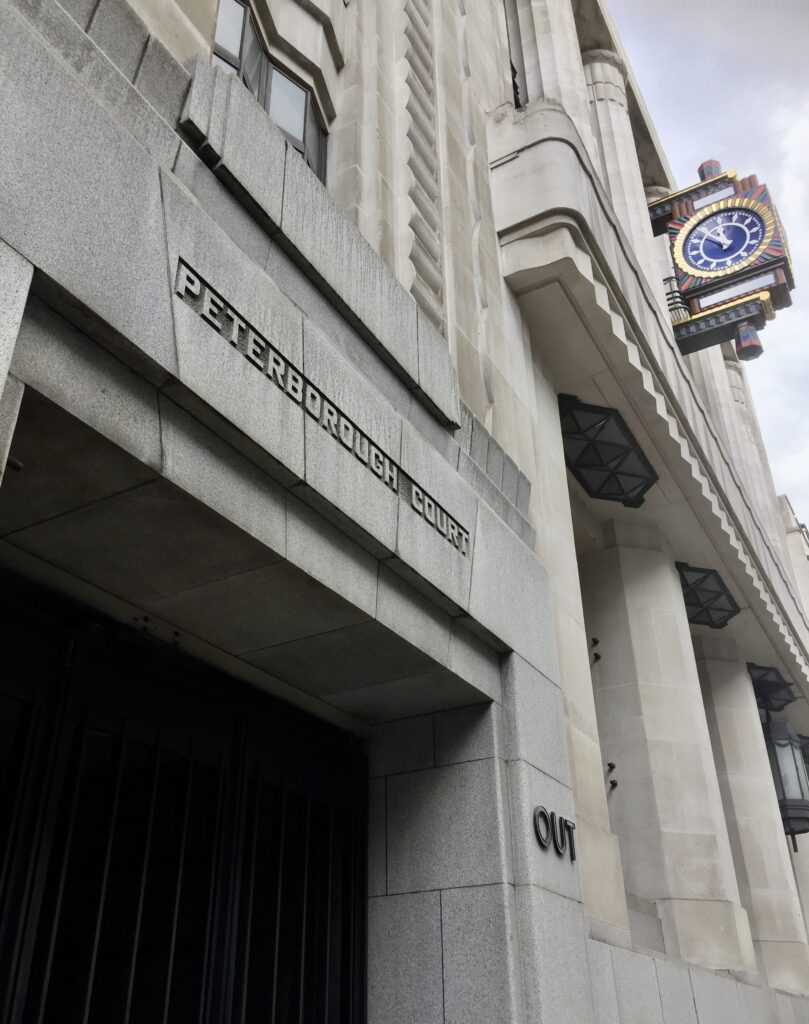
The Court is named after the Bishop of Peterborough who owned the land in the 14th century. Described as ‘An Art Deco Temple to Journalism’, the Portland Stone building dates from 1928 and was the home of the Daily Telegraph. The newspaper moved out in 1987 and eventually Goldman Sachs International leased the building at a cost of £18 million a year. The lease runs out in 2021 and I think they have already vacated the building since it looks a bit sad and neglected. There was talk last year of it becoming another WeWork site but who knows in the current economic climate. The lovely Art Deco clock usually makes me smile …
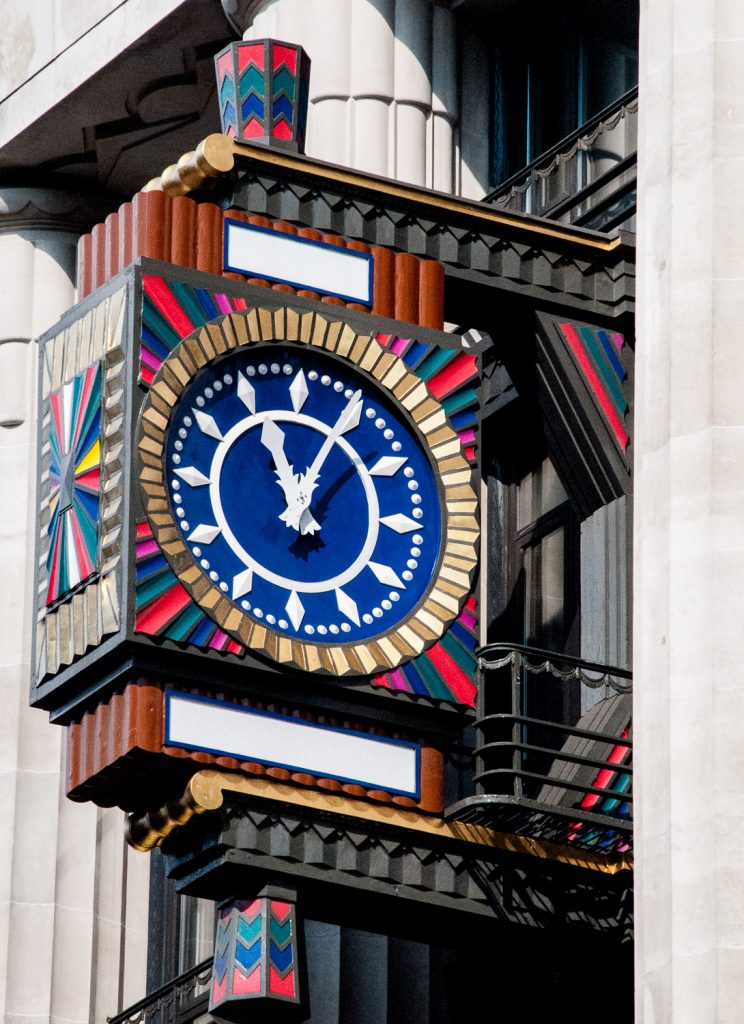
Cheshire Court is modest, but its fame comes from its neighbour, Ye Olde Cheshire Cheese – a pub which has been recorded on this location since at least 1538, although it’s original name was probably the Horn Tavern …

Wine Office Court is so named because licences for selling wine were issued at premises here. That’s the entrance to Ye Olde Cheshire Cheese on the right …
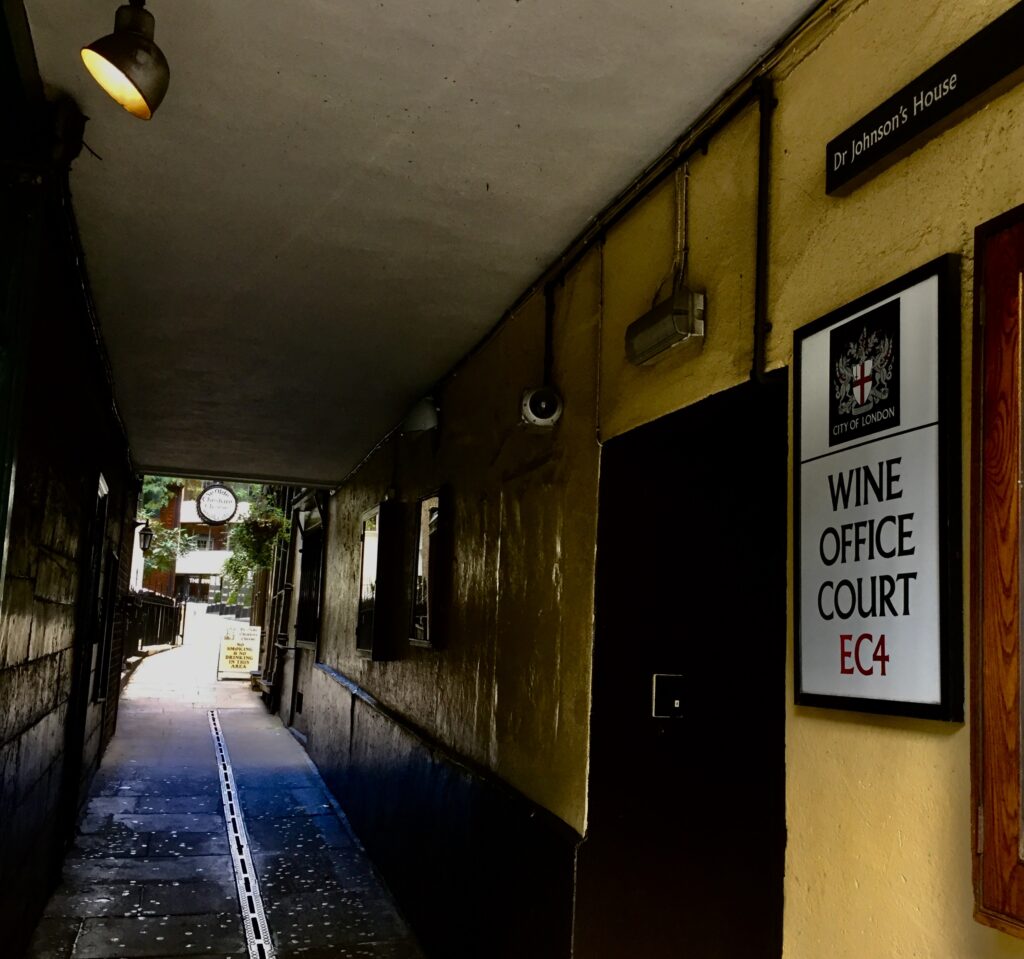
The view looking towards Fleet Street …
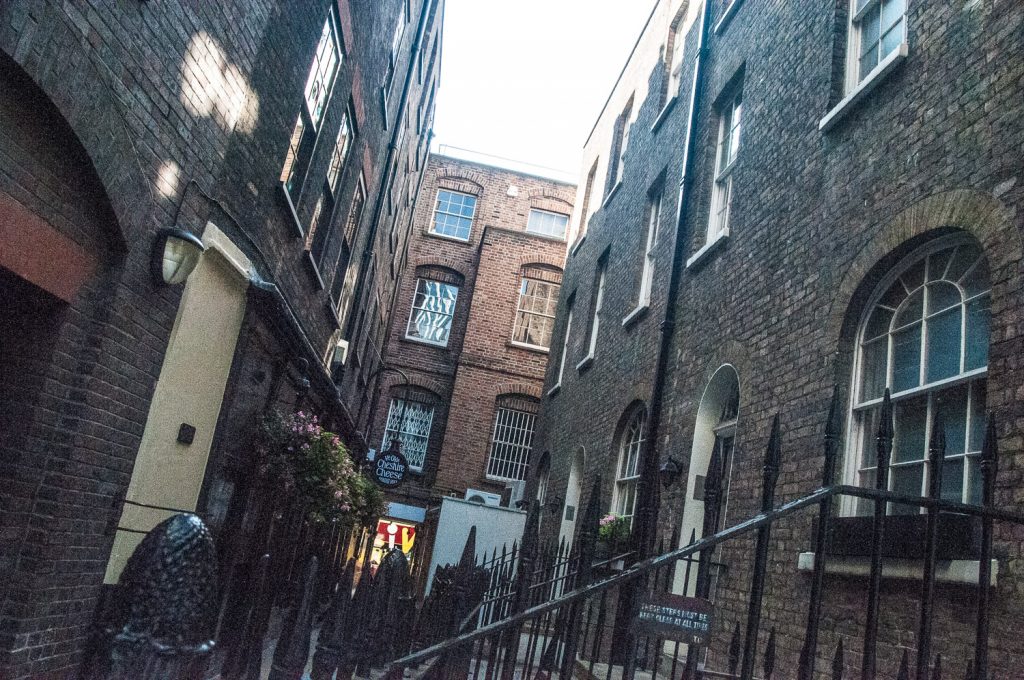
I can’t find out much about Hind Court, it’s possibly named after a tavern …
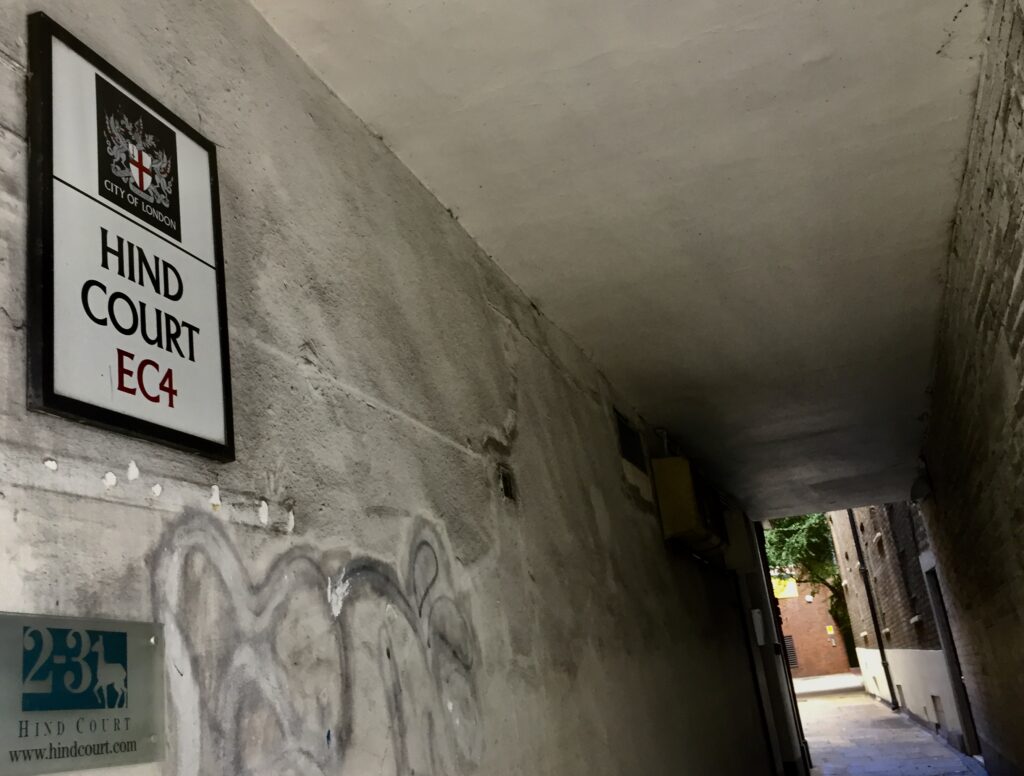
Many of the courts have a plaque at the entrance. This one shows a facsimile of the front page of the first edition of Daily Express dated Tuesday 24th April 1900 …
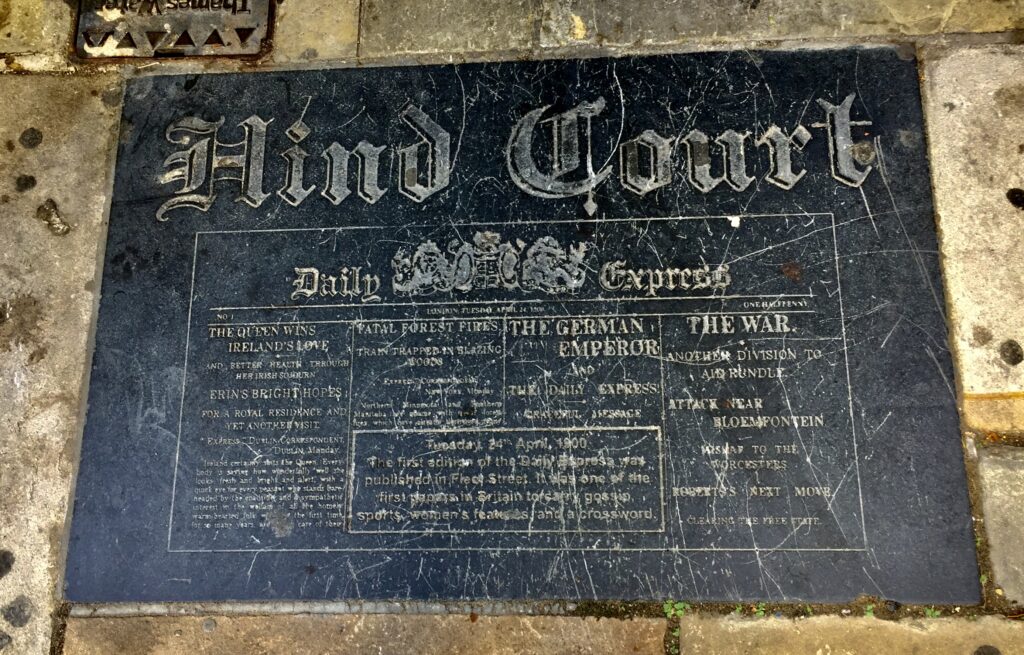
The note in the box reads …
The first edition of the Daily Express was published in Fleet Street. It was one of the first papers in Britain to carry gossip, sports, women’s features and a crossword.
Bolt Court is probably named after another vanished inn, the Bolt-in-Tun, and Dr Johnson lived here at number 8 from 1776 to when he died in 1784. The house was lost in a fire in 1819 …
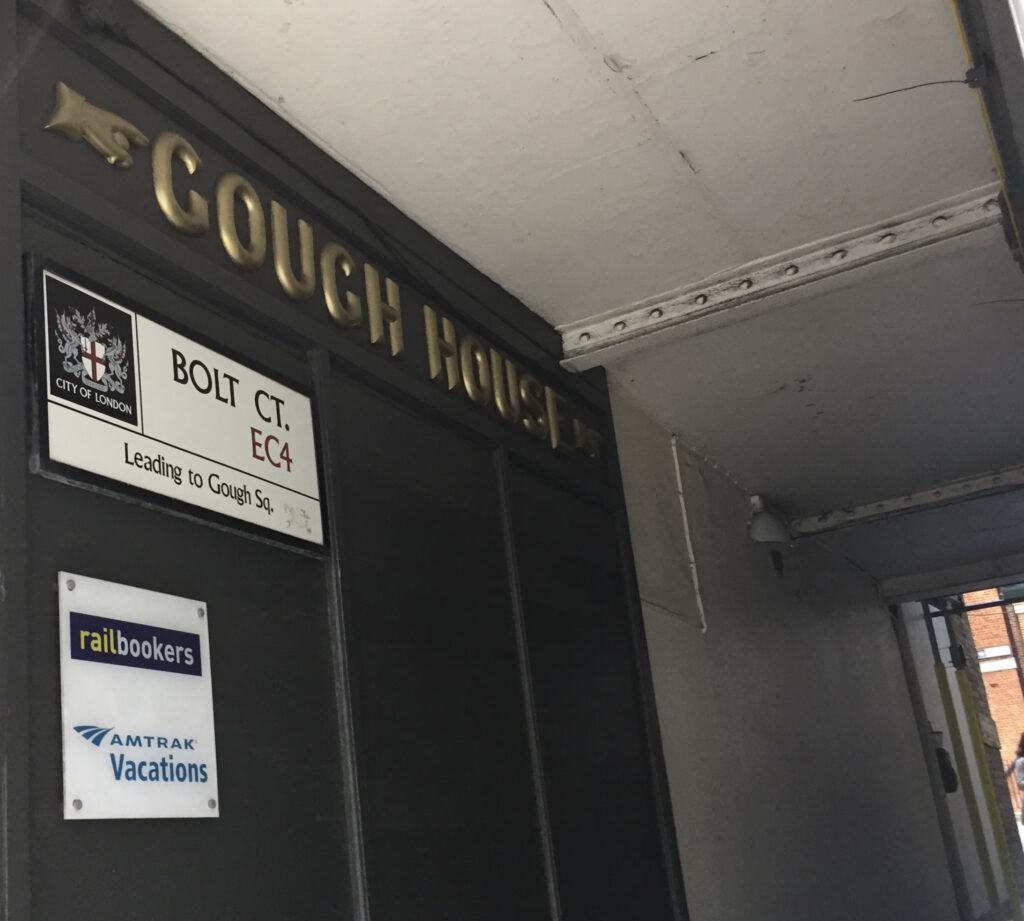
At the entrance is a facsimile of the front page of The Sun newspaper dated 15th September 1984 …
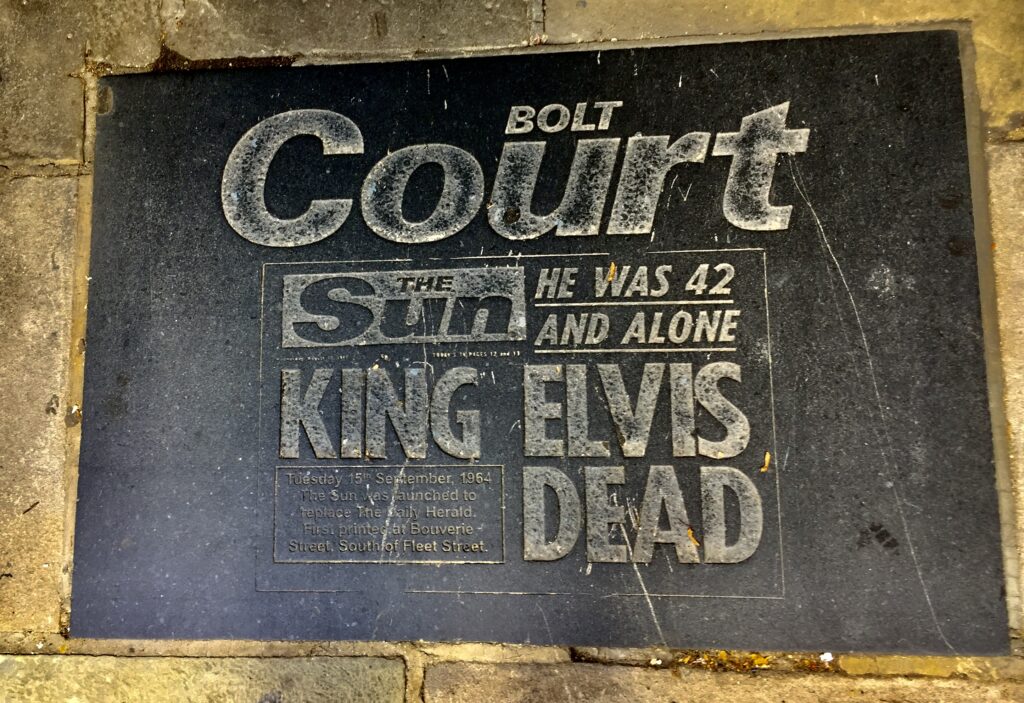
Bolt Court leads to Gough Square where another house that was occupied by Dr Johnson has survived. There is also a sweet sculpture of his cat Hodge looking towards his old home …
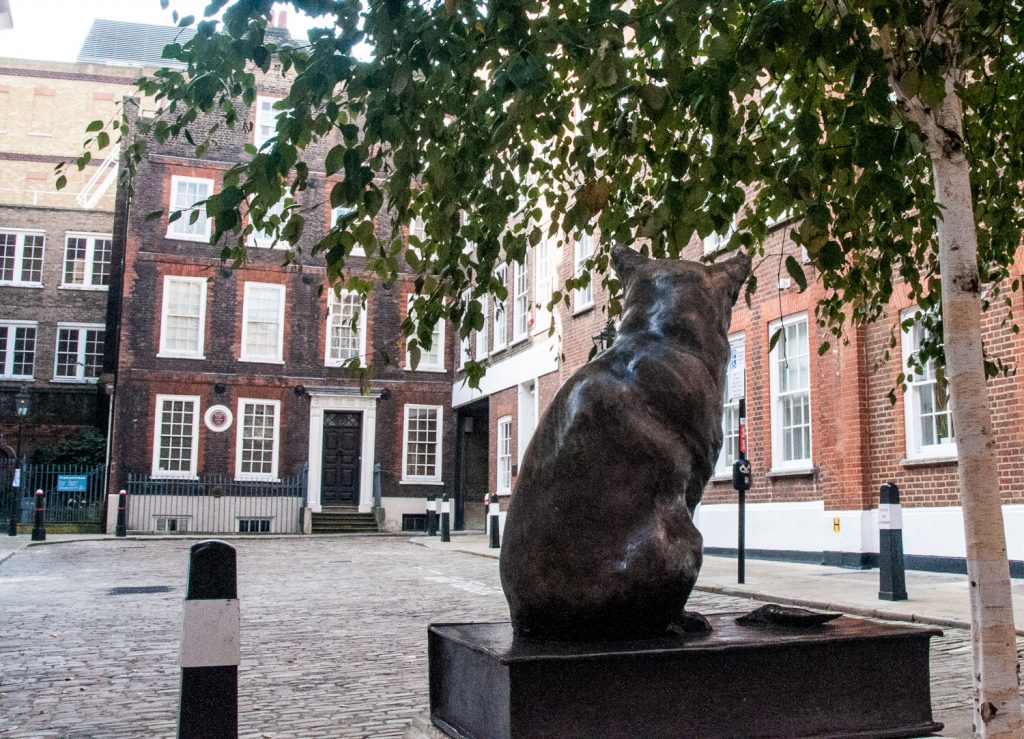
I’ve written more about the Square and Hodge in this blog entitled City Animals 2.
St Dunstan’s Court references the nearby church, St Dunstan-in-the-West …
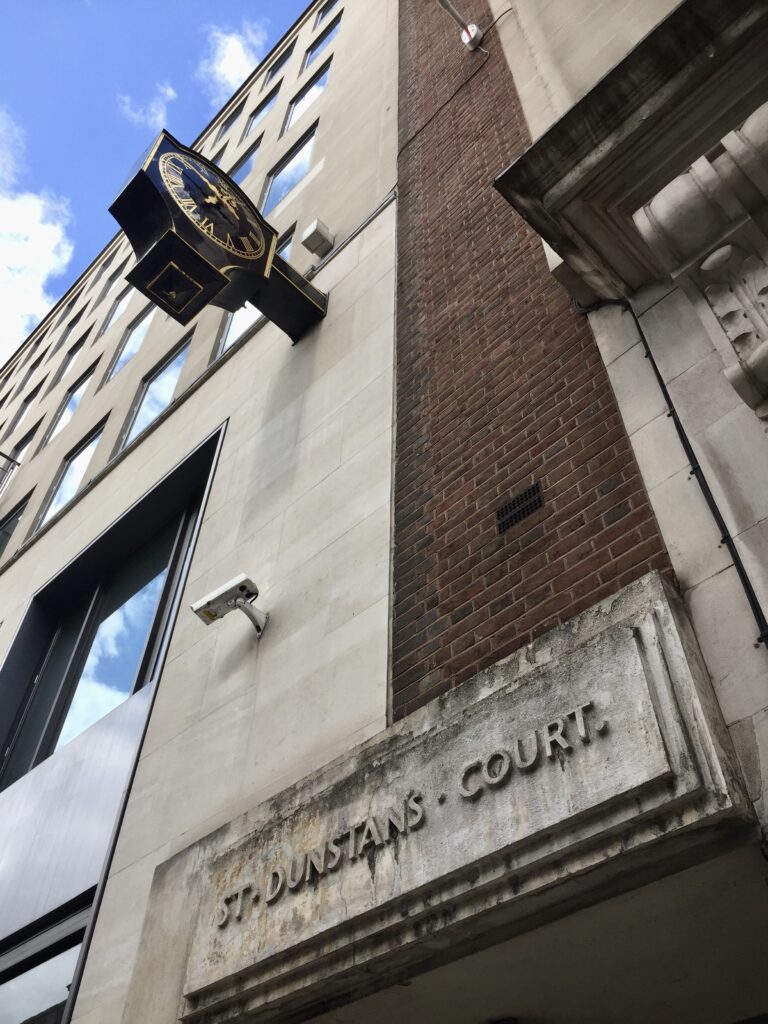
At its entrance computerisation in the printing industry is illustrated, a bit bizarrely I think, by the Pac-Man game …
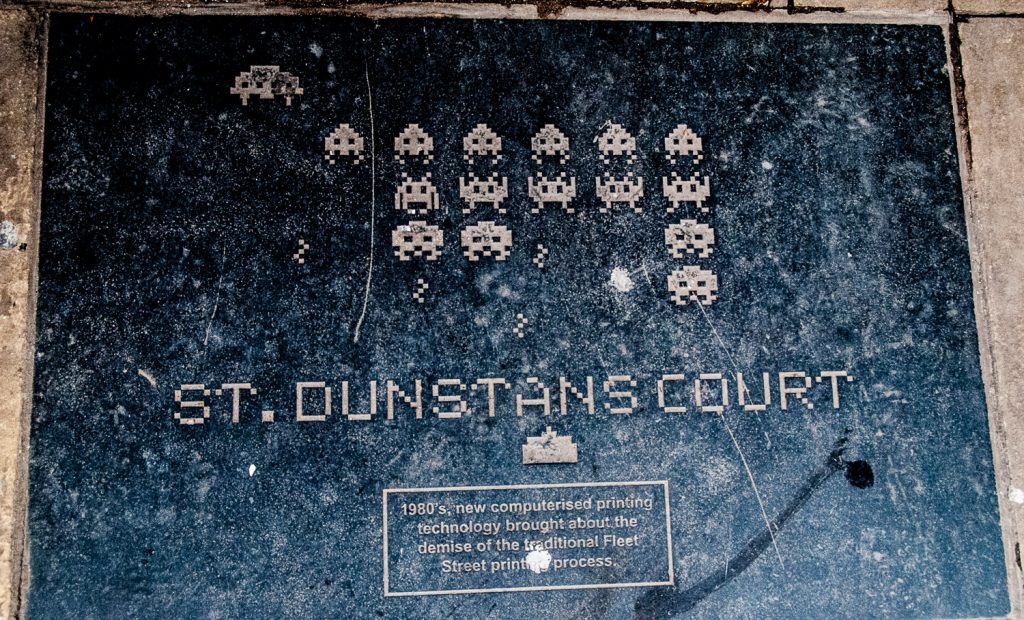
The Royal Society met in Crane Court from 1710 until they moved to Somerset House in 1780 …
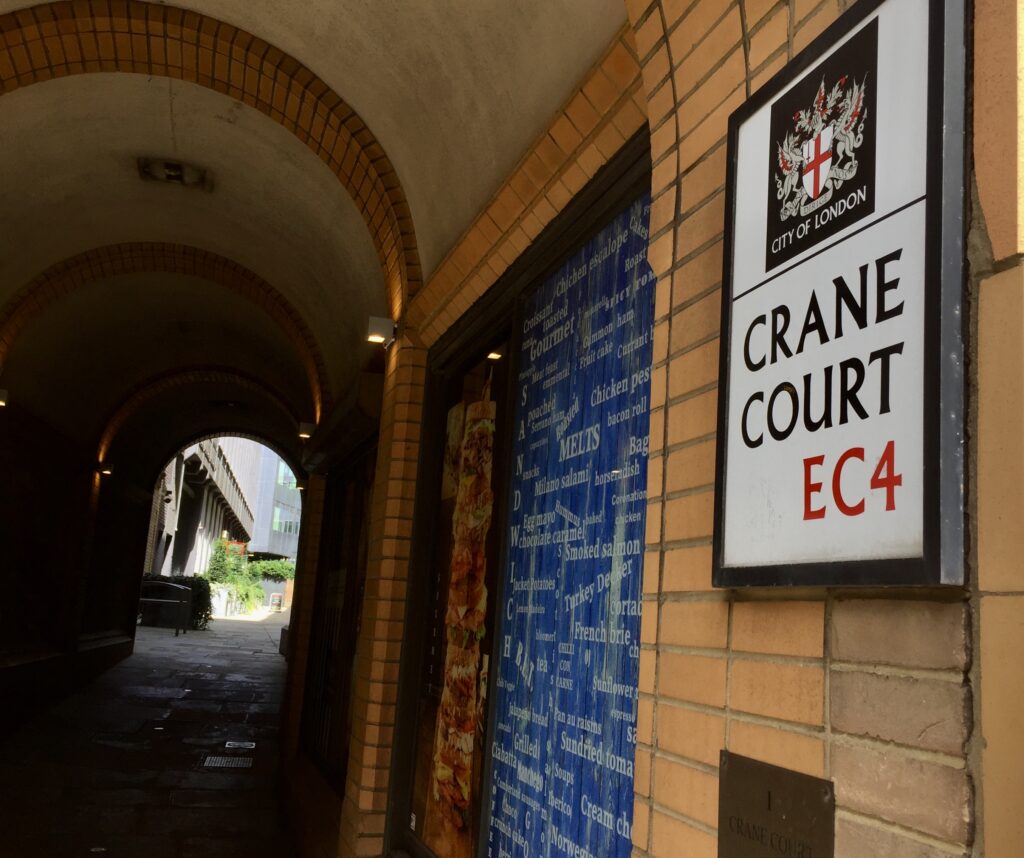
The plaque shows a facsimile of the front page of the Daily Courant dated Wednesday March 11, 1702 …
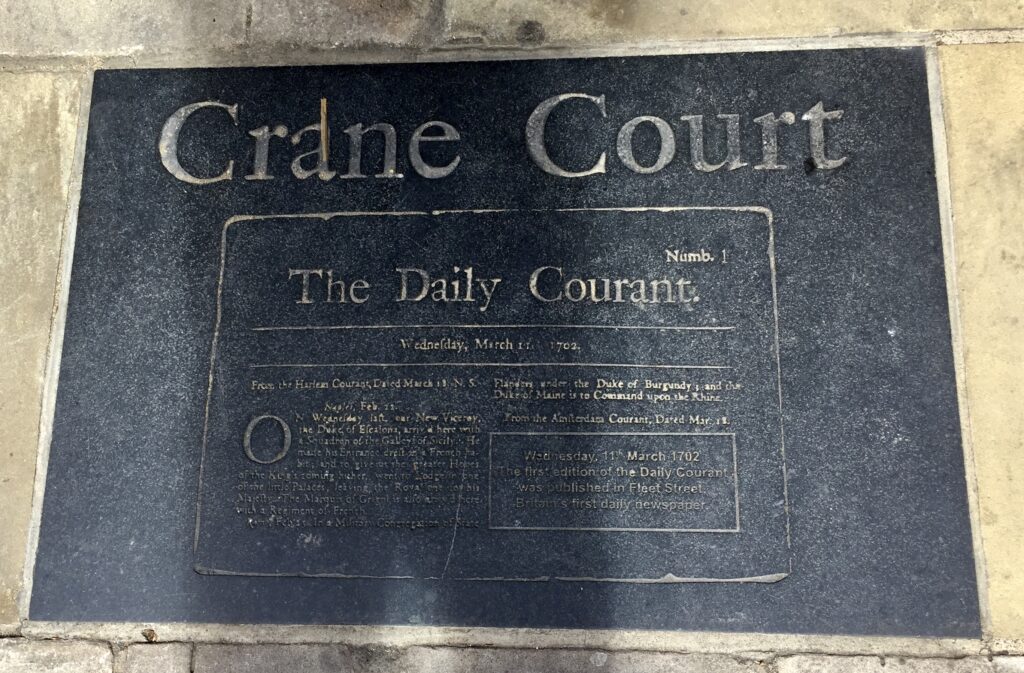
It was Britain’s first daily newspaper.
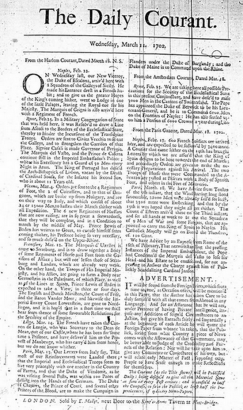
On 14 April 1785 it ran a story about a man murdered after a visit to the barber. Some claim that this was the inspiration behind Victorian penny dreadful Sweeney Todd (allegedly a resident of 183 Fleet St) and the spawning of lots of movies …
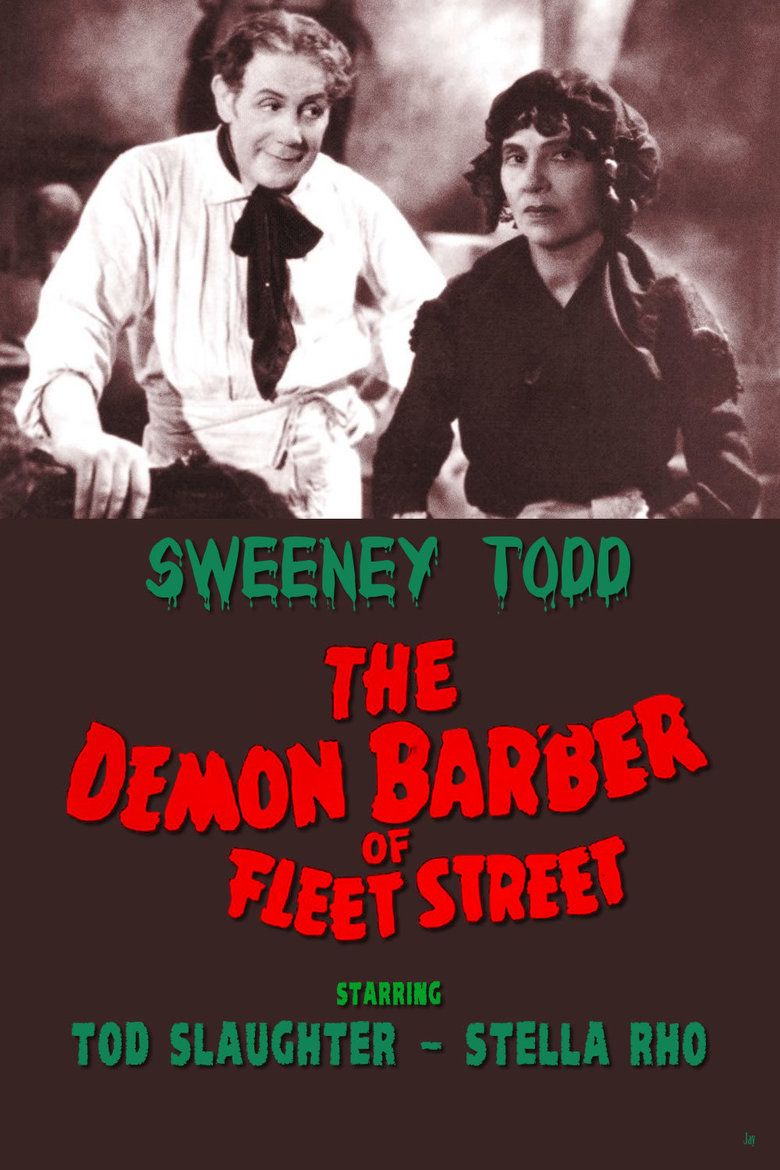
It’s worth taking a walk through Crane Court and seeing how it opens up into an area full of character where development has been careful and restrained …
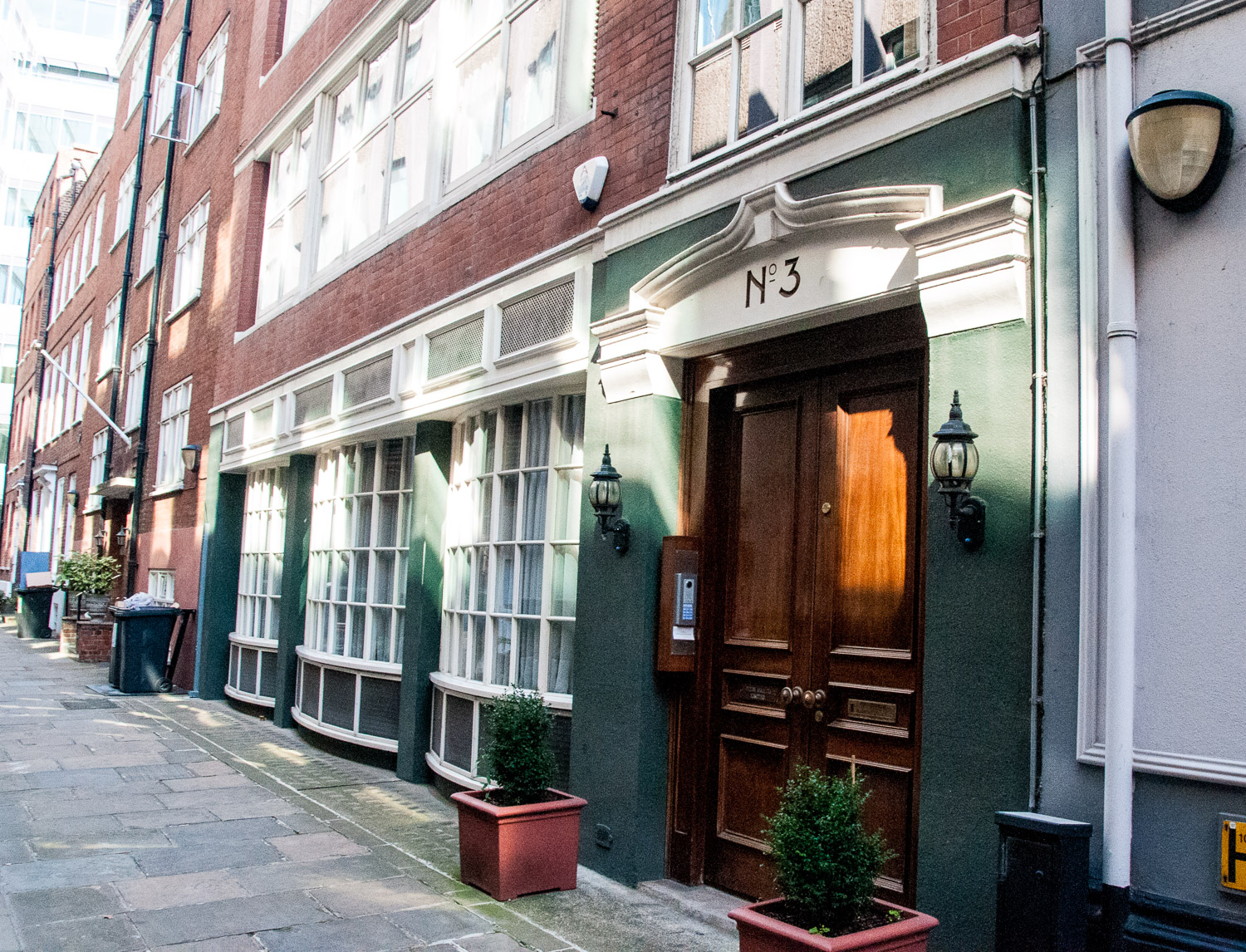
Mitre Court was named after the Mitre Tavern …
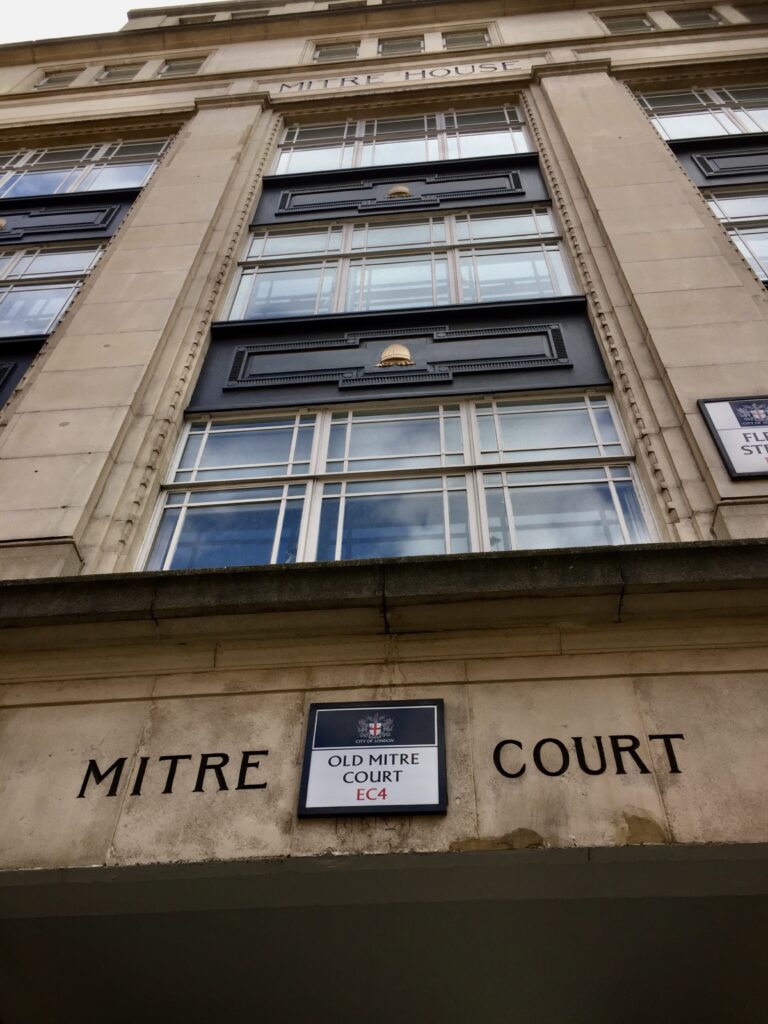
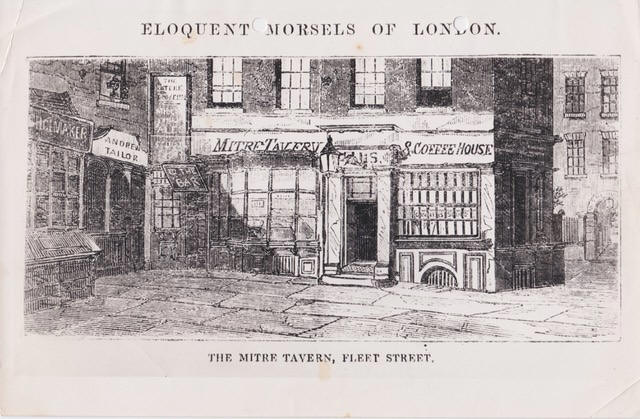
The Mitre was Dr. Johnson’s favourite supper-house and James Boswell, his biographer, referred to dining there …
We had a good supper, and port-wine, of which he (Johnson) sometimes drank a bottle.
Like nearby Bouverie Street, the name Pleydell Court comes from the Pleydell-Bouveries, Earls of Radnor, who were landlords in this area …
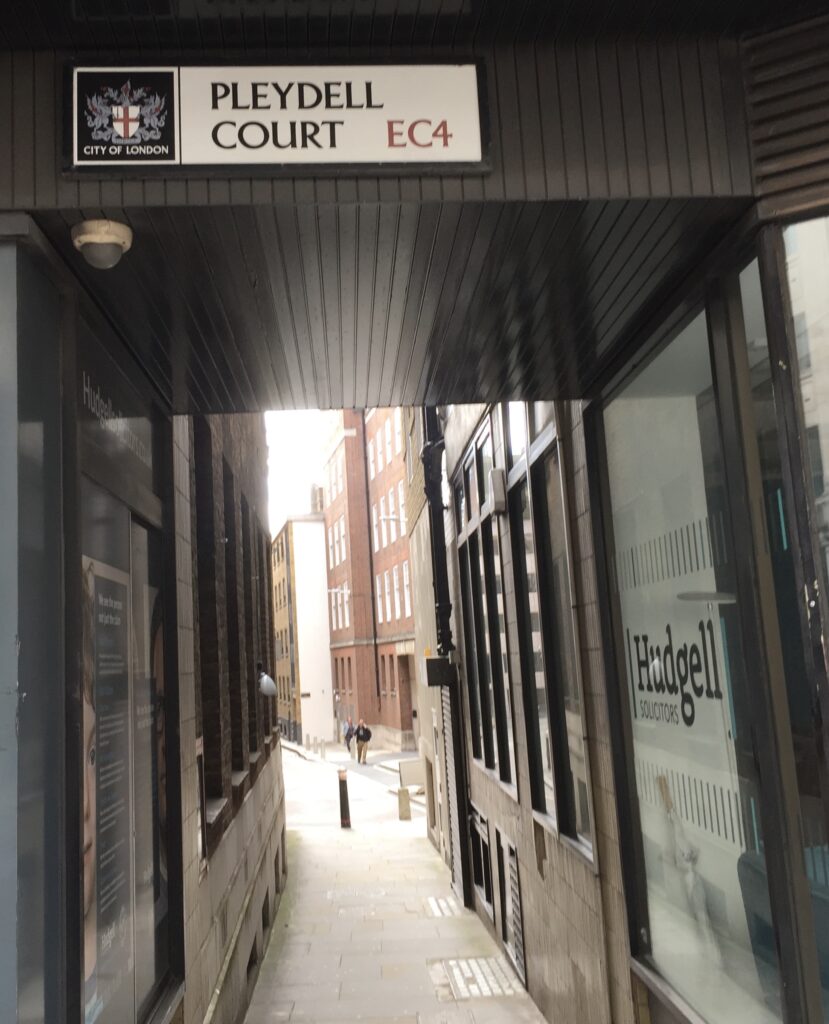
Now to Hare Place and its interesting history.
The Whitefriars, or Carmelites, once owned land stretching from here to the river. When the monastery was dissolved in November 1538 the land was sold to individuals who subdivided their plots and built tenements on them. However, this precinct had long possessed the privileges of Sanctuary, which were confirmed by a charter of James I in 1608. From about this time the area was known by the cant name Alsatia (after the disputed continental territory of Alsace), and its entrance was in Hare Place, then known as Ram Alley …
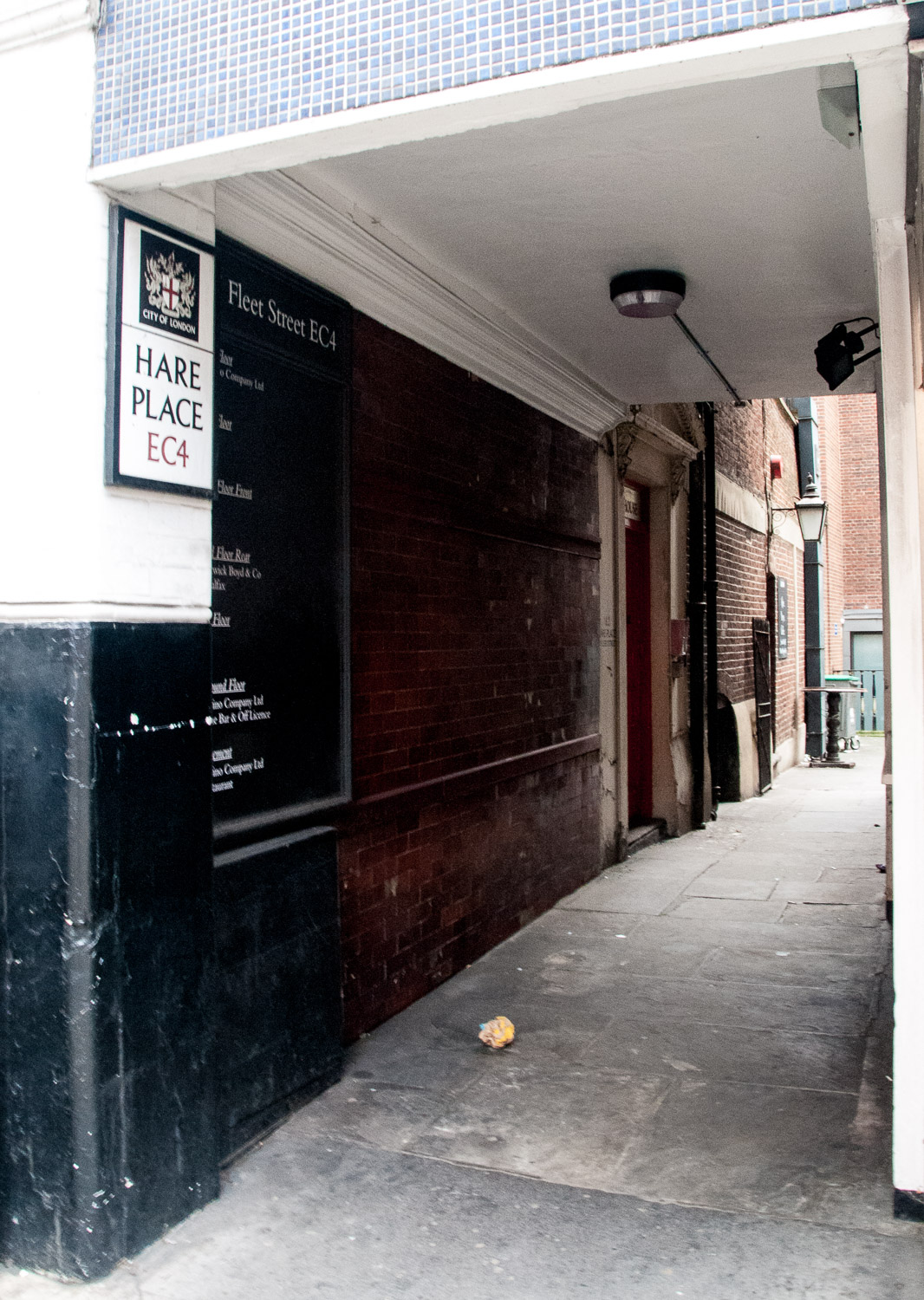
It became the ‘asylum of characterless debtors, cheats and gamblers here protected from arrest’. One Edwardian historian spoke of …
Its reeking dens, its bawds and its occupants’ disgusting habits. Every house was a resort of ill-fame, and therein harboured women, and still worse, men, lost to every instinct of humanity.
The privilege of Sanctuary was finally abolished in 1687.
And, finally, I walked through these elaborate gates to Serjeants’ Inn. …
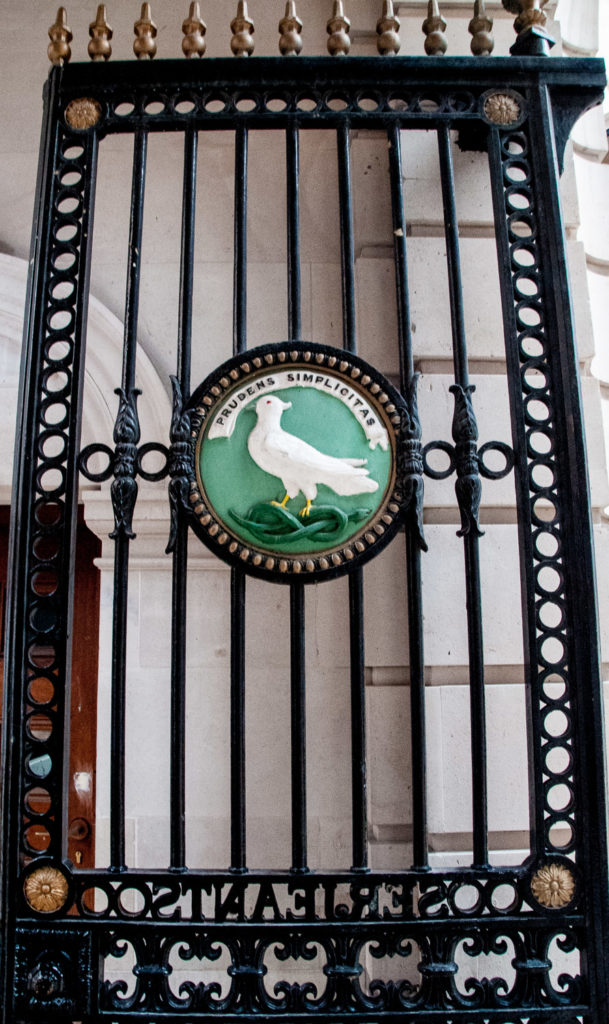
Prudens Simplicitas (Prudent Simplicity) was the motto of the Amicable Society which was based here from 1838 and was the world’s first mutual life insurance company. The unusual choice of creatures may refer to a biblical quotation in which Jesus exhorted followers to be ‘wise as serpents, gentle as doves’. Lost during building works, the gates were rediscovered in a scrapyard in 1937 and returned to their original position here in 1970.
What awaited me inside the gates was quite unexpected …
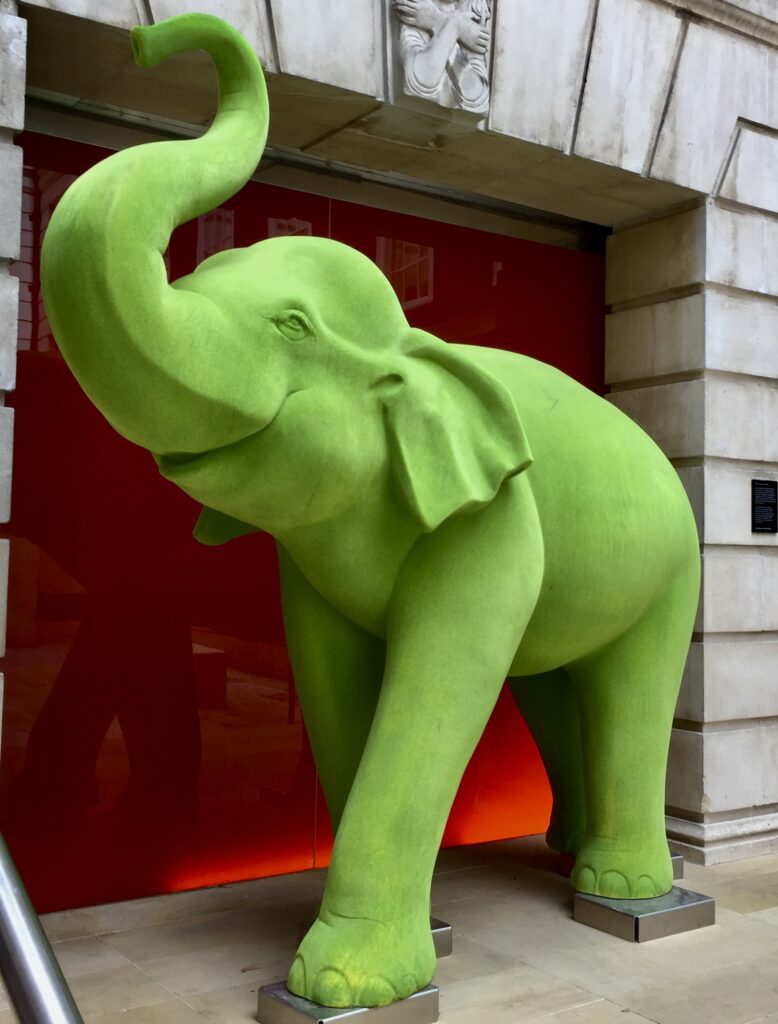
There is nothing to give a clue as to what this happy elephant represents but I am wondering if he is linked to the green bear that has recently appeared outside Citypoint …

If you would like to follow me on Instagram here is the link …
